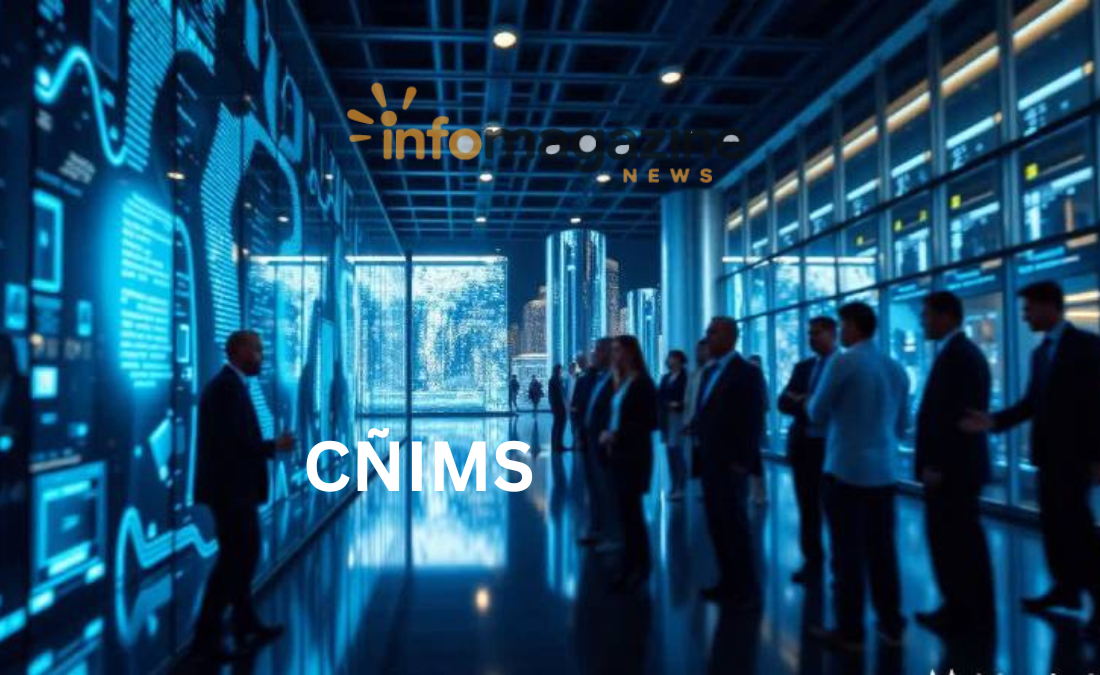In the evolving landscape of digital systems, the term CÑIMS has begun to surface in various academic, governmental, and technical contexts. Despite its relatively obscure nature, It holds potential significance in sectors related to information management, database systems, national monitoring, or even cybersecurity. This article provides an in-depth look into the concept of CÑIMS, exploring its possible meanings, usage, implications, and future scope.
What Is CÑIMS?
Defining the Acronym CÑIMS
At first glance, It appears to be an acronym. While it is not widely recognized in mainstream technology or institutional frameworks, it may stand for a specialized system or program such as:
- Centralized Ñational Information Management System
- Cyber Ñetwork Infrastructure and Monitoring System
- Community-based Ñetworked Information Management Structure
The inclusion of the special character Ñ suggests a connection to Spanish-speaking regions or systems developed in Latin America or Spain.
The Linguistic and Regional Significance of CÑIMS
The Role of “Ñ” in the Term CÑIMS
The character Ñ is a letter used in Spanish and some other languages. Its use in implies that the term or system is likely rooted in Spanish-speaking institutions. This gives a hint that could be part of a governmental or academic information system in Latin American countries, such as Mexico, Argentina, Colombia, or others.
Some speculative examples where might be relevant include:
- A national database system for demographic or census data.
- A school or university’s information management system.
- A regional cybersecurity monitoring network.
CÑIMS in Government and Institutional Use
How CÑIMS Could Be Applied in Government Operations
If CÑIMS is a government-related acronym, it might serve multiple roles:
- Data Centralization – Unifying databases across government departments.
- Citizen Services – Managing identity documents, healthcare records, and social services.
- Security Monitoring – Real-time surveillance and cyber activity tracking.
- Education Systems – Collecting data from schools for policy analysis and improvement.
Several Latin American countries have implemented large-scale information systems for managing population data, health records, and economic statistics. It could very well be a regional variant or experimental model in one of these areas.
Technological Framework of a System Like CÑIMS
Components and Architecture of CÑIMS
Any advanced information management system, especially one on a national scale, would include components such as:
- Data Warehousing – Large-scale storage of structured and unstructured data.
- APIs for Integration – Allowing departments to interact with the system.
- Security Layers – Encryption, role-based access, firewall integration.
- Real-Time Analytics Dashboards – For monitoring trends and anomalies.
- Cloud Infrastructure – For scalability, reliability, and remote access.
If is indeed a tech-based information system, it likely encompasses these technologies and is customized to serve specific governmental or institutional needs.
Potential Benefits of Implementing CÑIMS
Why Organizations Might Develop or Use CÑIMS
Whether it is government-led or private-sector based, the benefits of a system like could be substantial:
- Efficiency: Streamlining information flow across departments.
- Transparency: Ensuring data-driven policy decisions.
- Security: Protecting sensitive data in an era of rising cyber threats.
- Scalability: Adapting to increased data volumes over time.
- Accessibility: Providing citizens with easy access to their records.
For example, in education, a CÑIMS could track student performance, teacher data, and school infrastructure, supporting data-backed improvements in curriculum design.
Challenges Faced by Systems Like CÑIMS
Limitations and Hurdles
Despite its advantages, implementing a system like may face several challenges:
- Initial Costs: High investment in software, hardware, and training.
- Interdepartmental Coordination: Ensuring all entities adopt the system uniformly.
- Cybersecurity: Constant updates to prevent data breaches.
- Language and Regional Integration: If used across regions with dialect differences or technical disparities.
- Data Privacy Concerns: Addressing fears about surveillance or misuse of personal data.
Addressing these challenges would require strategic planning, robust IT infrastructure, legal frameworks, and continuous monitoring.
CÑIMS in Comparison to Other Information Systems
How CÑIMS Might Compare to Global Systems
To understand better, let’s compare it to some existing global information systems:
- India’s Aadhaar System: A biometric identity program with centralized data.
- The U.S. National Student Clearinghouse: For education and transcript data.
- UK’s NHS Spine: A digital backbone for health records and services.
If CÑIMS mirrors such systems, it could be Latin America’s answer to large-scale national data solutions, adapted with regional needs and linguistic considerations in mind.

Hypothetical Applications of CÑIMS Across Industries
Industry-Specific Use Cases
Let’s explore how it might be applied across various sectors:
- Healthcare: Managing patient records, vaccination history, and national health data.
- Education: Tracking academic performance, infrastructure, faculty, and digital learning.
- Agriculture: Monitoring climate, crop yield, farmer data, and subsidies.
- Finance: Linking taxpayer information, banking identity, and financial aid distribution.
- Public Safety: Real-time crime data, predictive policing, and emergency response.
In each of these fields, It could serve as the digital nervous system facilitating informed decision-making.
The Future of CÑIMS: Possibilities and Innovations
The Next Generation of National Information Systems
As digital transformation accelerates, the future of CÑIMS—or systems like it—looks promising:
- AI Integration: Automated decision-making, fraud detection, and pattern recognition.
- Blockchain: Secure, immutable record-keeping.
- Mobile Platforms: Bringing services directly to the population via apps.
- Open Data Portals: Allowing transparency and public access to non-sensitive data.
- Regional Expansion: Cross-border compatibility for immigration, trade, or travel.
Governments and institutions willing to invest in such technology will be better prepared to meet future challenges.
Conclusion: The Importance of Understanding CÑIMS
While the exact definition and implementation of remain somewhat speculative due to limited public documentation, its structure as an acronym—particularly with the unique Ñ character—suggests a specialized system potentially rooted in Latin American governance, education, or technology.
The possibilities associated with range from national data systems to sector-specific monitoring platforms. As digital infrastructure becomes central to national growth and security, understanding systems like CÑIMS—and supporting their ethical, secure, and efficient implementation—will be critical.
Whether you’re a policymaker, IT professional, academic, or simply a curious individual, staying informed about such terms can help you navigate and shape the future of information technology across global and regional contexts.




